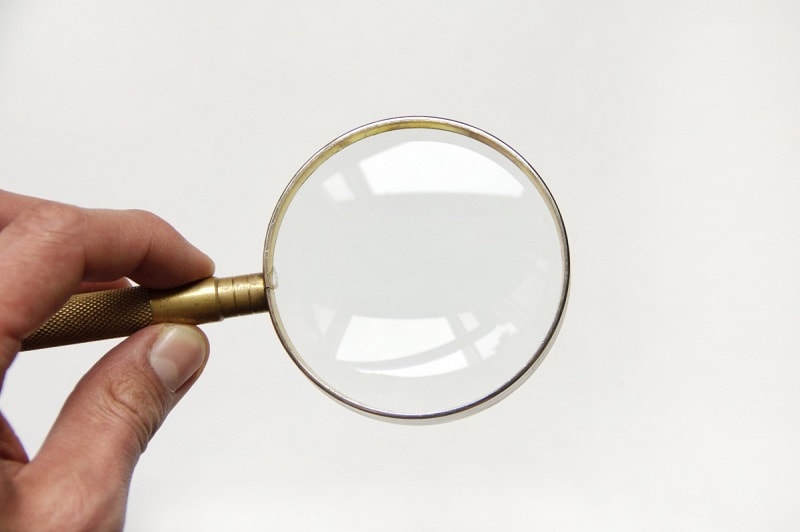How Does A Magnifying Glass Work? (With Pictures)
Last Updated on

We all spent time playing with a magnifying glass as kids, and plenty of us continue to use magnifying glasses for work, life, or fun as adults. If you’re wondering just what trickery a magnifying glass employs to make things appear larger than they actually are, then you are in the right place. We’re going to go over exactly how a magnifying glass works and why it behaves the way it does.

A Primer On Light and Eyes
The first step to understanding how a magnifying glass works is to understand how your eyes work in general. When you see an object, it is because light waves are bouncing off that object and shooting directly into your eye. Because your eye is relatively small, and it only detects light that shoots directly into it, all of these waves of light are roughly parallel to each other (this is important).
Your eyes are designed to take all these parallel lines and correctly interpret the size of everything you are seeing as long as the waves of light hitting your eye are roughly parallel.
How The Convex Lens Tricks Your Eye
Most magnifying glasses use a pair of convex lenses back-to-back. Convex means to curve outward as you get closer to the center of the lens. The objective lens (the one pointed away from you), bends the light that passes through it and focuses it into your eye at an angle.
Since your eye is used to processing light waves that are parallel to each other, when it receives these focused waves, it interprets the size of the object as if the lines were still parallel. This essentially tricks your eye into thinking that it is seeing a much larger object than it actually is.
But Wait, There’s More…
This explains why the object appears larger in our eyes, but it has to be more than just a trick; after all, we really can see more detail in a magnified image, so the image actually is larger, isn’t it?
If it were just the magnifying glass playing tricks on our eyes, the object would appear larger, but be out of focus or fuzzy, so that the amount of detail our eyes could see was the exact same as when the object was looked at with the naked eye. So, what else is happening?
In a simple magnifying glass, the main answer is this: surface area. As the convex lens bends the light, the curved surface also allows for more light waves to be captured and focused into your eye than would normally hit. Light waves that would normally bounce off your eyebrow or cheek are instead focused and bent to hit the focal point of the magnifying glass.
The increased surface area means that you get more light than you would with just your eye, and with more light comes more detail. Coincidentally, this is also why pointing a magnifying glass at the sun will create massive amounts of heat at the focal point.
Microscopes, Telescopes, Etc.
The basic concepts are the same with microscopes and telescopes, but these devices use more than one lens to compound the effects beyond what a single convex lens can accomplish.

Summary
Humans have been using convex lenses since around 1,100 A.D., but ancient Chinese people were building microscopes using water to magnify objects as early as 2,000 B.C. The first reports of using a convex lens in spectacles was in the 1200s, and things have progressed significantly since then. Magnifying glasses today are much more powerful than the first microscopes.
Magnifying glasses are a fun and effective way to see more about the world around us, and hopefully, now you understand a little bit more about how magnifying glasses work than you did before.
Featured Image Credit: CC0 Public Domain, Pxhere
About the Author Robert Sparks
Robert’s obsession with all things optical started early in life, when his optician father would bring home prototypes for Robert to play with. Nowadays, Robert is dedicated to helping others find the right optics for their needs. His hobbies include astronomy, astrophysics, and model building. Originally from Newark, NJ, he resides in Santa Fe, New Mexico, where the nighttime skies are filled with glittering stars.
Related Articles:
How to Collimate Binoculars: 9 Expert Tips
How to Clean a Refractor Telescope: Step-by-Step Guide
How to Clean a Telescope Eyepiece: Step-by-Step Guide
How to Clean a Rifle Scope: 8 Expert Tips
Monocular vs Telescope: Differences Explained (With Pictures)
Can You Use Binoculars to Look At Stars? How to Choose the Right Pair
How to Choose Binoculars for Bird Watching: 10 Expert Tips
What Is a Monocular Used For? 8 Common Functions
